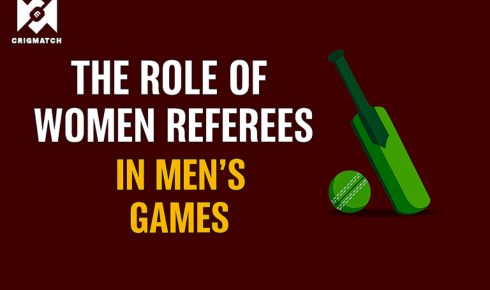The Role of Women Referees in Men’s Games

Sport has always been a reflection of society, and just as conversations around equality and representation have grown stronger, so too has the presence of women in officiating roles. In recent years, women referees have increasingly taken charge of men’s games across football, cricket, basketball, and other sports. Their involvement is more than symbolic—it represents a shift in how sporting institutions recognize talent, ability, and professionalism regardless of gender.
Breaking Barriers in a Male-Dominated Space
Historically, men’s games were considered off-limits for women referees. This was due not to a lack of skill but to societal perceptions and structural barriers. Over the past decade, however, these walls have started to crumble.
- Football: Referees like Stéphanie Frappart have officiated in the UEFA Champions League and FIFA men’s World Cup matches, setting milestones for inclusivity.
- Cricket: Women umpires such as Claire Polosak have stood in men’s domestic and international fixtures, proving that judgment and decision-making transcend gender.
- Other Sports: From rugby to basketball, governing bodies are appointing women referees to top-tier men’s competitions.
These breakthroughs highlight a global recognition that competence should define opportunities, not gender.
Skill, Fitness, and Professionalism
To officiate at the highest levels, referees must meet stringent requirements—physical fitness, sharp decision-making, and calmness under pressure. Women referees have consistently demonstrated these qualities.
- Physical Standards: Many women officials undergo the same endurance and sprint tests as their male counterparts.
- Decision-Making Ability: Studies show female referees perform equally well in accuracy of decisions.
- Professional Training: With structured referee academies and international exposure, women are now trained alongside men in every technical aspect.
This parity underscores that refereeing success is determined by preparation and professionalism, not by gender.
Changing Fan Perceptions
One of the biggest challenges women referees face is fan perception. Stadium audiences and television viewers are not always accustomed to seeing women officiate men’s matches. Initially, some responses included skepticism or criticism.
However, as women referees continue to excel in high-profile fixtures, acceptance has grown. In fact, many fans now view them as trailblazers who bring fresh perspective and reinforce the principle of fairness in sport. Social media reactions after landmark matches often include praise for their confidence and composure under pressure.
Role in Promoting Equality
The visibility of women referees in men’s matches goes beyond sport—it has a social impact.
- Inspiration for Young Girls: Seeing women in positions of authority encourages young athletes to pursue careers in refereeing or coaching.
- Cultural Shift: It challenges outdated notions that certain roles are reserved for men.
- Equal Pay Movements: By proving their ability in the same competitions, women referees strengthen the call for equal recognition and remuneration.
Thus, their role is not only about officiating games but also about reshaping perceptions of leadership and capability.
Institutional Support
For women referees to thrive, institutional support is essential. Several organizations have taken important steps:
- FIFA and UEFA: Actively encouraging more women to enter officiating pathways and offering appointments in men’s tournaments.
- ICC: Expanding opportunities for women umpires in men’s cricket fixtures, both domestically and internationally.
- Domestic Leagues: Many national boards and leagues are setting quotas or inclusive policies to ensure equal opportunities.
These initiatives ensure that talent, rather than gender, becomes the deciding factor for appointments.
Challenges That Remain
Despite progress, challenges still exist:
- Gender Bias: Women referees often face harsher criticism for mistakes compared to male counterparts.
- Limited Numbers: The pool of women officials in top-level men’s games remains small, indicating the need for broader grassroots development.
- Media Scrutiny: Women referees are sometimes judged on appearance rather than performance, undermining professionalism.
Addressing these barriers will be critical for sustaining momentum.
The Road Ahead
Looking forward, the presence of women referees in men’s games is expected to grow steadily. As training systems expand and more role models emerge, younger generations will see refereeing as a viable career path regardless of gender. Governing bodies must continue to invest in education, create safe working environments, and reward referees fairly.
Ultimately, success will be measured not just by how many women referee men’s games but by the normalization of their presence—when their gender no longer becomes a point of discussion.
Final Thoughts
Women referees are rewriting the rules of modern sport. By bringing skill, professionalism, and authority to men’s games, they are challenging stereotypes and promoting inclusivity. Their journey reflects both the progress made and the challenges still ahead in the pursuit of equality.
For fans who want to follow updates on officiating trends, referee milestones, and inclusive sporting developments, platforms like the Cricmatch app and Cricmatch app download gateway provide reliable coverage, ensuring that stories of change and progress reach audiences worldwide.




